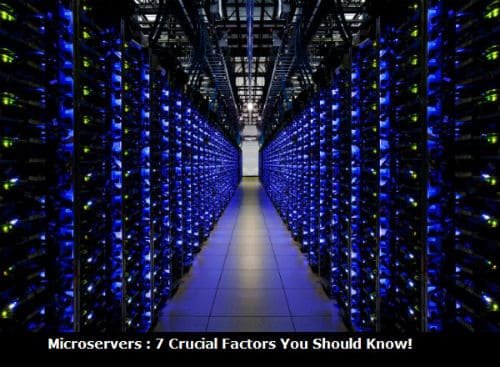
Microserver is a crucial technology in the market! Before we get going about the essential factors of microservers, let’s have a closer look at them:
What Is A Microserver?
Microserver is a small server appliance that functions like a usual server. It is created for processing the light-weight data and scaling out the workloads for hyper-scale data centers. The workloads suitable for microservers include entry dedicated hosting, serving the static web page, basic content delivery etc. A microserver has its own hardware, software and operating system.
Businesses are experimenting with clusters of low-power servers known as microservers. These servers are suitable for the growing volume of hyper scale workloads found in the modern data centers.
Here’s an informative insight on the most crucial factors that you need to know about Microservers:
There’s Room For Smaller Cores
There is no need to deploy a multi-core processor for executing every computing task. Some tasks require comparatively less computing power; however, they need to be executed in large numbers and therefore, they can be effectively handled by many passive cores. For instance, serving static content like HTML elements in a web page to a wide range of people or performing the innumerable computing jobs that are otherwise executed through the Hadoop infrastructure.
Microservers Are More Appropriate For Small Tasks
With the use of a microserver, there is less wasted silicon adding up to the cost of buying and operating the machine. By removing the features that are not applicable to the lightweight workloads, microservers can execute the insignificant workloads easily in place of high-specification server alternatives.
Low Power Consumption Equals To Lower Running Costs
The power consumption done through microserver’s stripped-back server technology is less as compared to 90W-plus TDP (thermal design power) of processors present inside the high-end servers. The microserver chips usually have a TDP of 45W or less and it drops to sub-10W levels. Thereby, the power consumption of microservers is less and as a result of this the running costs are also reduced.
Microservers Save Space
Microservers are usually based on small form-factors and system on a chip (SOC) boards. This infrastructure packs the memory, CPU and system I/O into a single integrated circuit. The small size of the boards enables the creation of the tightly packed clusters of microservers. This saves the physical space in the data center.
Web Hosts Will Witness The Advantages Of Microservers
Web hosting companies are the primary contenders for the use of microservers. The companies engaged in serving content over the internet like Google are also the prime users of microservers. These companies need to carry out lightweight computing tasks many times at various locations. They also have the technical expertise for setting up the hardware and software required to run the microserver clusters. The large web-based companies like Facebook, are also engaged in testing the microservers and many microserver designs.
As the execution of public cloud services increase, the demand for microservers suitable for handling the low cloud service workloads is also estimated to grow.
Microservers Are Expected To Be More Specialized
Microservers are specialized and customized for performing lightweight tasks. As the market grows, microservers are tailored to even more definite workloads like executing industry specific SAAS apps.
There Are Limitations On What A Microserver Can Do
It is a fact that microservers do not have the complete power for carrying out the demanding computing tasks efficiently. For instance, microservers do not have the computing power required for enterprise IT solutions and the advanced technical workloads.
Rewriting the software so that it runs on microserver clusters an also be an overhead. The software has to be written again so that it can successfully spilt a task between multiple microservers and then execute it simultaneously. Another important consideration is the additional network infrastructure required for shuffling the traffic between microservers and clusters.
The microserver technology has its own importance in the hosting industry and it is important for every hosting customer to know about it. Having said this, it is also true that microservers are not going to replace the usual servers. Microservers are expected to create their own niche; they are not going to replace the traditional high power servers. Basically, microservers are determined as new server types and not an upgrade of the traditional servers.
Looking for Cloud Hosting Services? Look no further than MilesWeb Hosting!







